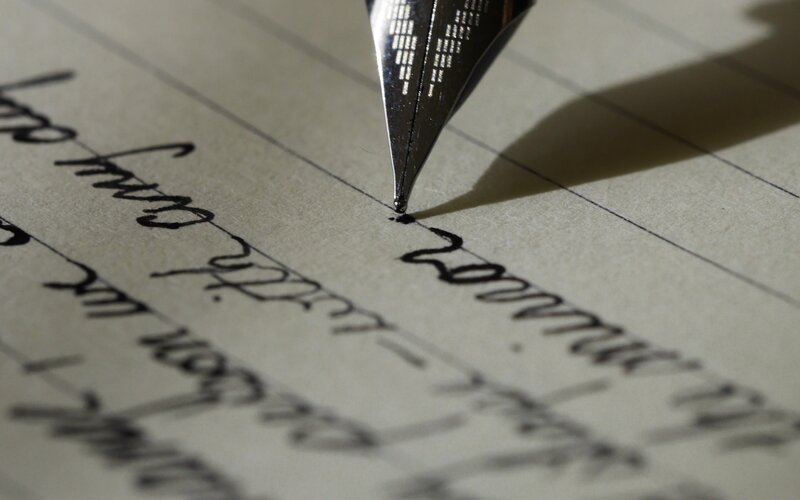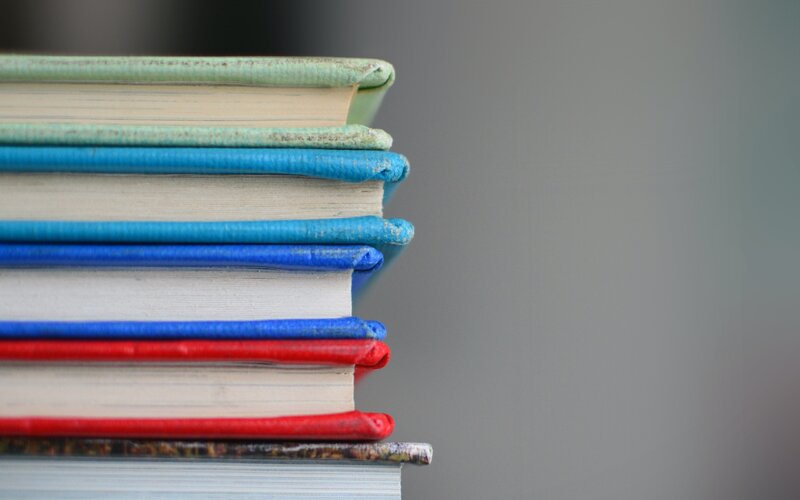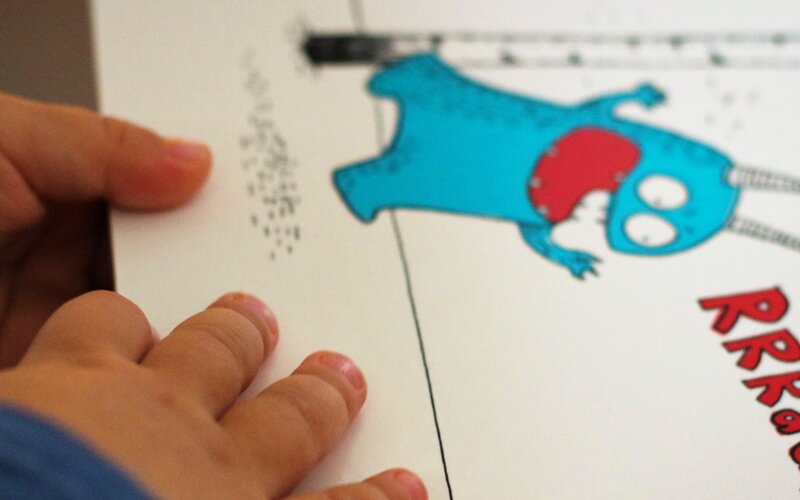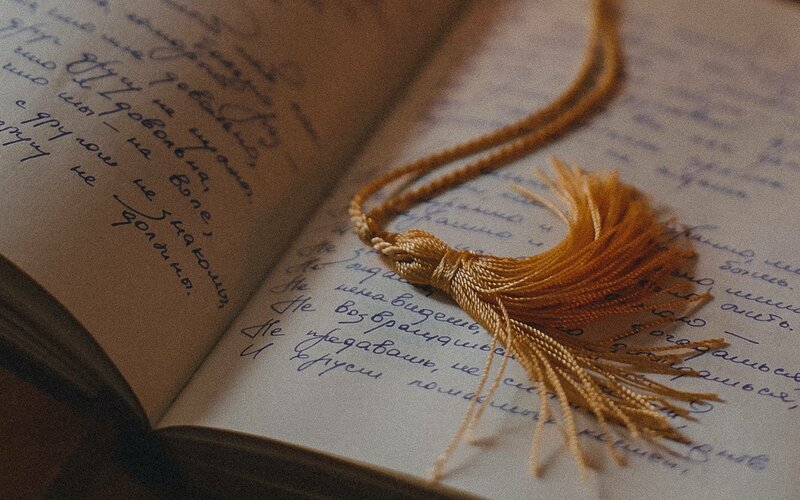
When you think of rhythm in writing, it’s probably poetry that springs to mind first. After all, the rhythm of a poem – its beat and flow – is one of the things that sets this type of writing apart from other forms of literature.
However, using rhythm in your writing can make it more impactful, whatever your preferred genre. Whether you want to start writing poetry, have a great idea for a suspenseful thriller, dream of writing the next The Gruffalo, or are keen to write film and TV scripts, rhythm can help to draw your readers (or viewers) in, and keep them engaged.
Let’s take a look at some rhythm in writing examples, as well as tips for making your poetry, prose and scripts pop.
What do we mean by rhythm?
Rhythm in writing is the pattern of stressed and unstressed syllables that create the beat of a sentence. When we speak, we naturally stress some syllables and others are unstressed. Take the word ‘apple’ as an example. Say it aloud. Which syllable do you stress? It’s the first one: we pronounce it like ‘AH-pul’.
Every word has stressed and unstressed syllables like this, and so in any sentence, this creates a pattern which acts like a beat. In poetry, this is called metre – but it can also be used to great effect in prose. Rhythm can be created by using a mixture of long and short words in a sentence. You can also make it by using a blend of long and short sentences on the page.
But punctuation plays its role in creating rhythm too. You can use punctuation to create stops and starts in writing. A sentence that uses lots of commas creates a different feel than one which utilises full stops.
Essentially, rhythm in writing is all about how a writer uses sentence length and sentence structure to pace their writing, and how they place the words and sentences on a page to help their writing flow.

Why is rhythmic writing important?
It’s not necessarily something we think about as readers, but the rhythm of a piece of writing can really elevate it. When sentences are all the same length, it becomes quite boring for the reader. Think about if someone is speaking to you in a monotone voice – everything they say sounds the same and it’s easier for you to lose interest. It’s the same for writing. We need to create rhythm in our writing, whether prose or poetry, to keep the reader’s attention and ensure they turn the page.
You can also use rhythm in your writing to build excitement or slow the pace. Short sentences, one after the other, give a clear sense that something big is about to happen – they mimic the quickening of a heartbeat. Long sentences, on the other hand, slow the pace right down. It’s good to have a mixture of both in your writing as you take your reader on a journey through your fictional world.
Rhythm in dialogue is a great way to convey the sense of different characters too. Some people might speak in short, sharp, one-word answers, which helps to build the idea of them as a brusque character – as someone who’s busy, or even plain rude. Alternatively, someone who always speaks in long, drawn-out sentences or uses florid descriptions for everything could be seen as a dreamer or a bit pompous.
How to write with rhythm
So, how do you go about discovering this sense of rhythm and utilising it in your own writing?
In general, writers should read widely. Not only will that help to spark your imagination, but it’ll also develop your sense of rhythm, and give you a feel for what will work in the type of writing you want to do.
You should also take time to learn about different literary techniques and understand what their effect can be on readers. As Alan Moore explains in his BBC Maestro course on Storytelling, “there is a multiplicity of rhythmic devices that you can employ in your prose. Know what you’re using and know its effect, and your writing will be immeasurably enriched.”
But there are other ways that you can learn how to use rhythm, and you should look to sources outside of literature for inspiration. Alan Moore is a fan of studying comedians to get a sense of timing. After all, comic timing is the key factor in whether a joke lands or falls flat. So, by watching comedy shows and stand-up routines, you’ll start to build a sense of what good rhythm, timing and pacing means – and that’s something you can use in your own writing. He says, “eventually, you will start to get a sense of how you can bring this element of timing to your stories and make them a beautiful ride for the reader, or an excursion at breakneck pace if you feel like it.” You may also want to employ different techniques to create rhythm, depending on what type of writing you’re doing. Let’s look at some different methods you can use, broken down by genre.
How to write rhythm in poetry
Poetry is, of course, the literary form that’s most closely associated with rhythm. That’s because lots of poems make use of metre to create a beat. The metre also helps to build a specific mood or tone to the poem.
Rhyme schemes in poetry can also help to create a rhythm, helping to make a poem more musical. As Carol Ann Duffy explains in her BBC Maestro course, Writing Poetry:
“From a very early age, we are used to hearing nursery rhymes and playground rhymes, the things our mothers chant to us. We still remember those little poems by heart because they often have rhyme or rhythm or metre. In a sense, the best poetry is always memorable and closely related to song. We learn the words of hymns, chants and Christmas carols because they are easily remembered and often repeated.”
She explains that much poetry has rhythm because metre tends to mimic natural speech. Iambic pentameter is one of the most common types of metre and is most famous for being used in Shakespeare’s sonnets.
An iamb is a metrical foot that’s made up of one unstressed syllable followed by a stressed one. It read as ‘da-DUM’. ‘Penta’ means five, so an iambic pentameter is made up of five ‘da-DUMs’. As Carol Ann Duffy says:
“We also speak in that kind of rhythm, ‘I think it’s time we had a cup of tea’ has the same metre as ‘shall I compare thee to a summer’s day’. There is a music built into the ordinary language that we speak and the natural language of English tends towards the iambic pentameter.”
However, not all poems use metre and rhyme – and you can write a memorable poem without using a rhyme scheme. Free verse is a type of poetry that doesn’t use metre or rhyme but there are still ways that you can create rhythm within a free verse poem.
One way you can do so is by using literary techniques like alliteration and assonance, which will help to create a musical feel in a less overt way. Carol Ann Duffy explains:
“Assonance is important in poetry. This is the half-rhyme, where you change the vowel sound in a word, as in weed/wood, or the consonants, as in weed /scream/receive. Assonance gives the words a musical chime.”
Techniques like this can be used to great effect, helping to create not only rhythm but a mood and atmosphere, whether you’re writing love poetry, nature poems, or something completely different.
So, if you want to create rhythm in your poetry, you can:
- Write in metre
- Use rhyme to create a more musical piece of writing
- Use literary techniques like assonance, even if you’re writing a poem that doesn’t stick to strict rules of form.

Using rhythm when writing children’s books
Children’s books are written to be read aloud, and they naturally need to capture the attention and imagination of young readers. As Julia Donaldson explains in her BBC Maestro course, Writing Children’s Picture Books:
“Relish the sound of every word. Your picture book is going to be read aloud, so sound is really important. And because it’s so short, every word has to count.”
Julia Donaldson writes in rhyme, which automatically creates a pleasing, sing-song rhythm to her books. But this isn’t the only approach to writing children’s books – and in fact, it’s not one that she necessarily recommends. She says: “Sometimes the rhymes don’t trip off the tongue – and that’s vital for a rhyming book. In my opinion, and that of my editor, it’s vastly preferable for a story to be in patterned prose than in rambling rhyme.”
You can, of course, play around with rhyme but there are plenty of other ways to create rhythm when you’re writing children’s picture books. As in poetry, you can experiment with different literary techniques that will have an impact on the pace of your book and how it sounds when it’s read aloud.
Alliteration and assonance and other forms of wordplay are the perfect places to start. As Julia says: “Picture books are often the first time a child will have come across alliteration and assonance, or examples of metaphor, simile, personification and figurative language. Then there’s onomatopoeia, where the words sound like the sounds that they’re describing. POP!”
These techniques build rhythm into your writing, creating a piece of work that feels animated and exciting to read. Take this example from Julia Donaldson’s book The Highway Rat:
A squirrel came bounding along the road,
then stopped with a shake and a shiver.
For reigning his horse was the Highway Rat,
who thundered, “Stand and deliver!”
The alliteration in ‘squirrel’, ‘stopped’, ‘shake’ and ‘shiver’ create a rhythm that gives a sense of the squirrel’s character, in contrast to the thunderous Highway Rat.
When writing children’s books, then, it’s important to have fun with them and try out different techniques. You can:
- Try writing in rhyme
- Write in prose but sprinkle rhymes throughout your writing
- Experiment with literary techniques

Rhythmic writing in thrillers
Writing a thriller is all about creating suspense through pacing. You want to keep your reader on the edge of their seat and keep them turning to the page. As Lee Child explains in his course on Writing Popular Fiction:
“Your job as a writer is to hook the reader at the beginning of the book and deliver them to the end. That may sound obvious. It may sound easy. But it’s a skill in itself. Hooking the reader at the beginning is one thing. Making sure they stay with the story to the end is a whole other thing, and in the case of some readers, elemental.”
So, how do you do that? It’s all about rhythm. You need to write in a way that drives the narrative forward. He explains:
“It is literally a syllable-by-syllable process from the very first word to the last. Each word, each sentence, each paragraph has to be designed, perhaps instinctively, but also knowingly, in such a way that the rhythm trips constantly forward, forward, forward, so that the reader is swept along by the prose.”
He compares writing thrillers to music. You need a mixture of fast-paced parts and slower sections to bring the whole thing together. If you write everything in short sentences that are full of action, it could get tiresome quickly. Similarly, if the action is dragged out over several paragraphs, pages or even chapters, the reader will lose interest:
“You need a mix of fast and slow, a mix of short sentences and long sentences. You need variation and modulation. Above all you need rhythm. These are musical qualities. Momentum in writing is created by meticulous attention to detail, from the very first syllable through to the very last.”
Writing everything at one pace, he suggests, is the same as having no pace at all. So mix it up and you’ll keep the reader’s interest to the very last line. Don’t fall into the trap of thinking that every line in your book has to be action-packed, just because it’s a thriller. You can also reveal details about characters and situations in the slower sections while giving your reader a chance to take a breath before the next big thrilling moment.
And, of course, as with any other type of writing, you can drop in alliteration and assonance to add rhythm and keep the momentum going. As Lee Child describes it:
“Those internal rhymes and echoes at the level of individual syllables are like little motors that power the reader through the text.”
When writing a thriller, then, you can create rhythm through:
- Using both faster and slower-paced sections of text
- Thinking of your writing as a piece of music that needs to be balanced
- Using the slower sections of text for a dual purpose, by revealing more details about your characters
- Making use of literary devices
How to use rhythm in TV drama and action scenes
Like thrillers, action and drama scenes in TV and films are fast-paced, designed to grip viewers and keep them watching until the end of the episode – while leaving them hungry for the next one. Rhythm in your screenplay action scene, then, is all about pace.
Jed Mercurio, in his Writing Drama for Television course, talks about critical mass and chain reactions.
He explains that there are radioactive materials everywhere in nature, but we don’t get nuclear explosions in the natural world because you need a certain amount of radioactive material together in one place. Only then does it become explosive – and the amount of radioactive material needed to cause an explosion is called the critical mass.
It’s the same with your writing. You need your characters, your setting, an inciting incident and an antagonist to all come together in the right place at the right time to trigger an explosion – your action scene.
The chain reaction is the series of events that brings them all together. Once they all come together, you want to create rhythm with short sentences and scenes – don’t slow the action down with long, panoramic shots or long-winded dialogue that distracts from the action.
When writing a heart-pounding action scene, you can create rhythm by:
- Thinking about critical mass and chain reactions: what are the elements of your story that need to come together for an explosive scene, and how can you set these up earlier in the show?
- Keep the pace up during action scenes
- Consider whether dialogue is necessary
Creating rhythmic writing
From experimenting with alliteration and rhyme, to creating a balance of fast and slow sections, there are plenty of ways to make your writing flow and ensure that you keep your readers with you. And, whatever genre you’re writing in, we have one final tip: read your work aloud. As
Alan Moore explains, this can help you to:
“See where you’ve dropped a syllable in the rhythm or when you’re left on an off-kilter stress. Any break in rhythm is a break in the mesmeric trance that you’re trying to cast over the reader. It will draw them out of the story, while a continuous beat will a keep them enthralled right to the end of the piece.”
Want to learn more writing techniques? Try out our online writing courses, from some of the best in the business, covering everything from creating compelling characters to writing convincing dialogue.

Give the gift of knowledge
Surprise a special someone with a year's access to BBC Maestro or gift them a single course.




